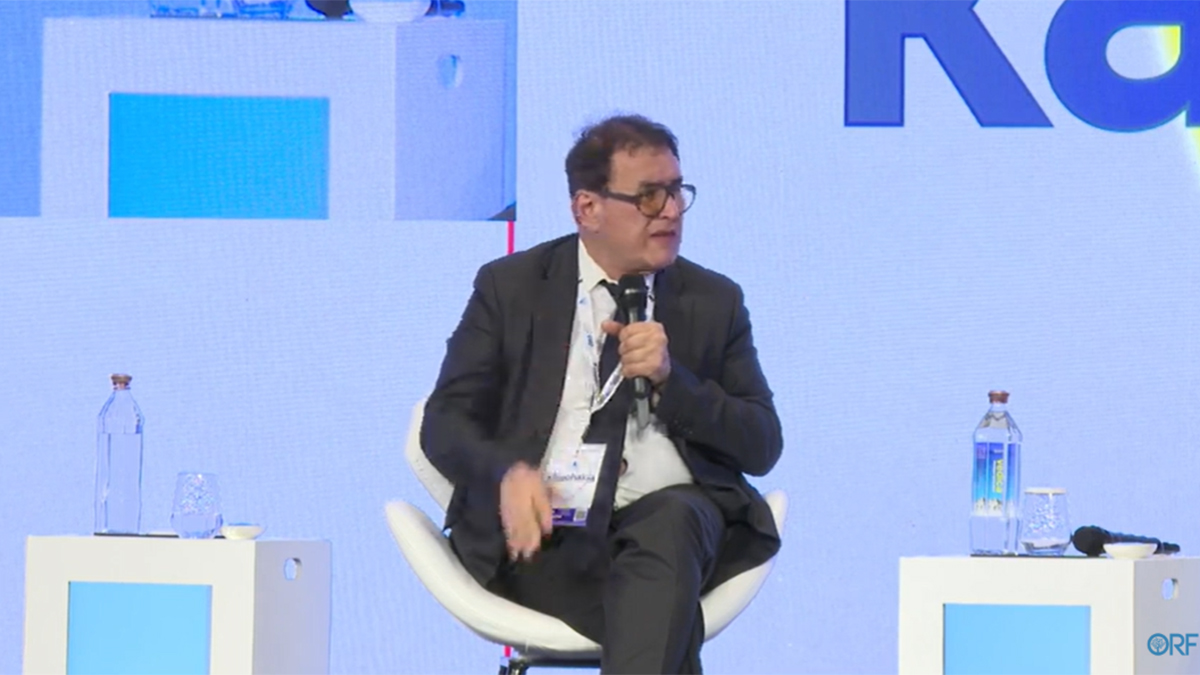The Raisina Dialogue 2025 brought together global experts to discuss financing climate resilience, a crucial yet often overlooked aspect of climate action. While mitigation efforts continue to receive the lion’s share of climate funding—over 80%—adaptation and resilience remain underfunded despite their profound socio-economic and cultural implications.
Speaking at Firstpost’s IdeasPod as part of the annual Raisina Dialogue organised by Observers Research Foundation (ORF) in partnership with the Ministry of External Affairs (MEA), Pepuke Bartowi, director of the Bridgetown initiative and special adviser on climate resilience to the Prime Minister’s office of Barbados, highlighted Barbados’ ground-breaking debt-for-climate swap.
Can Climate Financing Plans Go Beyond The Paper? | Firstpost Ideas Pod | N18G
The initiative, among the first of its kind, has helped the country restructure $300 million in debt, saving $130 million over a decade. These funds are being reinvested into critical projects such as a sanitation and agricultural water treatment plant, addressing key climate adaptation needs for the water-scarce island nation.
Bartowi emphasised the necessity of strong project pipelines, trusted financial partnerships, and technical expertise to successfully implement such mechanisms. She underscored the importance of scaling up financial guarantees beyond multilateral development banks, calling on bilateral donors to step in with contingent guarantees that could help mobilise domestic capital markets and attract private investment.
She advocated for a collective approach, wherein countries facing similar climate challenges—such as coastal erosion, water scarcity, and soil degradation—could work together to develop and fund adaptation projects.
Dr. Nilanjan Ghosh, Vice President of Development Studies at ORF India, echoed these concerns, pointing out the stark imbalance in climate finance allocation. He noted that investors prioritize mitigation projects due to their clear return on investment (ROI), whereas adaptation projects often lack direct economic returns and are perceived as public goods.
However, Ghosh cited the Global Commission on Adaptation’s 2019 findings, which estimated that every dollar spent on adaptation yields a $4 return over a decade—a figure he suggested might be even higher.
Ghosh called for a paradigm shift in financial mechanisms, advocating for the recognition of social rates of return rather than just economic returns. He suggested expanding market frameworks beyond carbon trading to include ecosystem services such as storm surge protection, fisheries support, and mangrove regeneration. By doing so, he argued, adaptation projects could become more financially viable, attracting greater investment.
The session highlighted the urgent need for policy innovation, financial incentives and institutional mechanisms to bridge the funding gap in climate resilience.
Experts stressed the importance of blended finance models, robust governance structures and capacity-building efforts to ensure that adaptation receives the attention and investment it deserves.


)
)
)
)
)
)
)
)
)



